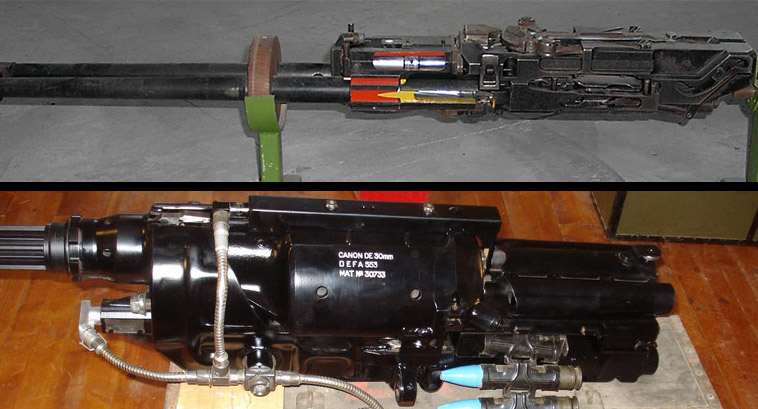Engine / powerplant
This section will be a tough one for me to write, as I can’t say I really properly understand jets / turbofans - I can pretend to be able to chat about them but basically it’s magic to me: air and fuel go in, magic happens, thrust comes out. So take the following with that in mind.
First, some high level notes. The L-39 is powered by a single Ivchenko AI-25TL turbofan. The C-101 is powered by a single Garrett TFE-731 turbofan (the C-101EB has a lower output TFE-731-2-2J and the C-101C a higher output TFE-731-5-1J). Both are turbofan engines with relatively similar thrust (we’ll get to that) and weigh about the same (333-350kg dry weight, according to Wikipedia - couldn’t find a better source).
Interestingly, neither engine was developed for military use: the Garrett engine design was based around the core of a DC-10 APU (TSCP700) and was first used in Learjet 35/36 and Dassault Falcon 10 (corporate / business jets). The Ivchenko engine was designed for short-haul use in the Yak-40 regional jet / VIP transport.
| Engine |
Type |
Length |
Diameter |
Maximum Thrust |
| Garrett TFE 731-2-2J |
Turbofan |
127 cm (50 inches) |
100 cm (39 inches) |
16.45 kN (3,700 lbf) |
| Garrett TFE 731-5-1J |
Turbofan |
127 cm (50 inches) |
100 cm (39 inches) |
20.90 kN (4,700 lbf) |
| Ivchenko AI-25TL |
Turbofan |
335.8 cm (132 inches) |
61.6 cm (24 inches) |
16.9 kN (3,800 lbf) |
The engines don’t appear very similar, though. An aerospace engineer’s approach would probably be more scientific - alas, I am not one. Therefore my first question was, why is one short and fat and the other long and skinny? (no, this isn’t a sexist Welsh pub joke - keep reading)
The top photo is the Garrett engine and the bottom one the Ivchkenko:
From the Wikipedia article on geared turbofans (I know - terrible source, don’t lynch me):
In a conventional turbofan, a single shaft (the “low-pressure” or LP shaft) connects the fan, the low-pressure compressor and the low-pressure turbine (a second concentric shaft connects the high-pressure compressor and high-pressure turbine). In this configuration, the maximum tip speed for the larger radius fan limits the rotational speed for the LP shaft and thus the LP compressor and turbine. At high bypass ratios (and thus high radius ratios) the tip speeds of the LP turbine and LP compressor must be relatively low, which means extra compressor and turbine stages are required to keep the average stage loadings and, therefore, overall component efficiencies to an acceptable level.
In conventional turbofans the fan tips exceed the speed of sound causing a characteristic drone, requiring sound deadening. Geared turbofans operate the fan at sufficiently low rotational speed to avoid supersonic tip speeds.
The Garrett engine is a geared turbofan, meaning that there is a planetary reduction gearbox between the fan and the low pressure shaft. This allows the LP shaft to run at a higher rotational speed thus enabling fewer stages to be used in both the LP turbine and the LP compressor, increasing efficiency and reducing weight. It appears that the Ivchenko is a more conventional twin-shaft turbofan that doesn’t have a planetary reduction gearbox.
The cutaway shows how the L-39 engine has a 9-stage high pressure compressor, whereas the C-101 engine only has a single stage high pressure compressor.
The Garrett engine also has a higher bypass ratio (2.82:1) than the Ivchenko (2.0:1).
In terms of specific fuel consumption, the Garrett engine is more efficient at stated 0.477 lb/h/lb versus Ivchenko’s stated 0.600 lb/h/lb.
The C-101 engineers saw it appropriate to keep the pilot informed of the fuel flow rate, whereas their czech mates didn’t really think that was a high priority. At sea level, the following fuel flow figures were shown at full throttle:
The higher output TFE 731-5-1J gets through just under 2,000 pounds per hour (907 kg), whereas the EB sips away at a more modest 1,700 pounds per hour (771 kg) at maximum thrust. In the absence of a fuel flow gauge or specific information, the only reference I have to the L-39 is the following from warbirdalley.com:
At climb power settings and low altitude, the IA-25 turbofan burns about 330 gallons per hour (GPH), but this rapidly decreases to about 160 GPH in cruise at Flight Level 180.
330 gallons is 1,250 litres, i.e. something around 2,215 pounds of jet fuel (1,005 kg).
| Engine |
Max consumption |
| Garrett TFE 731-2-2J |
771 kg/h (1700 lbs/hr) |
| Garrett TFE 731-5-1J |
907 kg/h (2,000 lbs/hr) |
| Ivchenko AI-25TL |
1,005 kg/h (2,215 lbs/hr) |
So - after all that, I guess the only concrete information I have to present is that the Soviet-designed L-39 engine is a bit older, louder and hungrier. Who would have thought…
It’ll be more interesting once I get to actually testing performance, I promise 
P.S. - on another note I’ll need to tidy up and consolidate the units I use, I know…it is interesting trying to compare a metric aircraft with an imperial one.
![]()




















